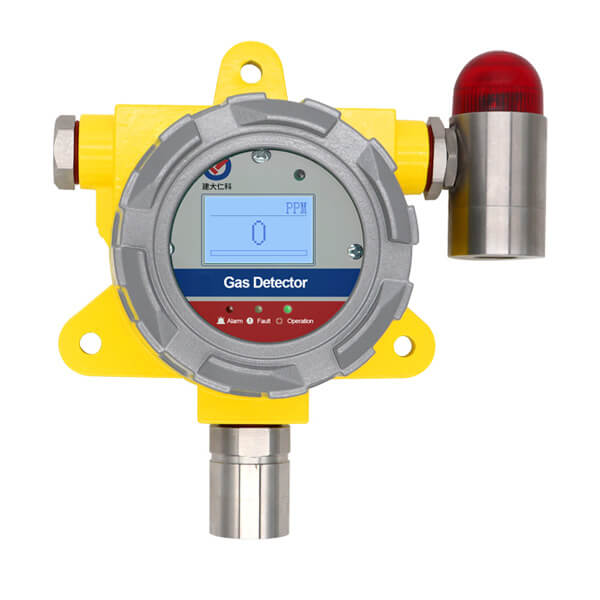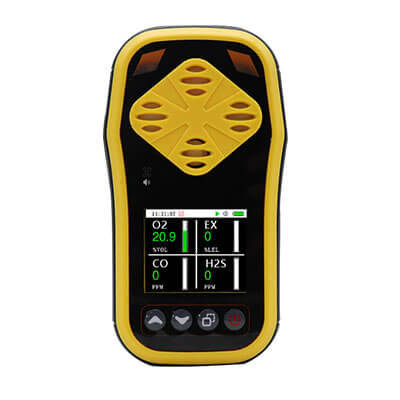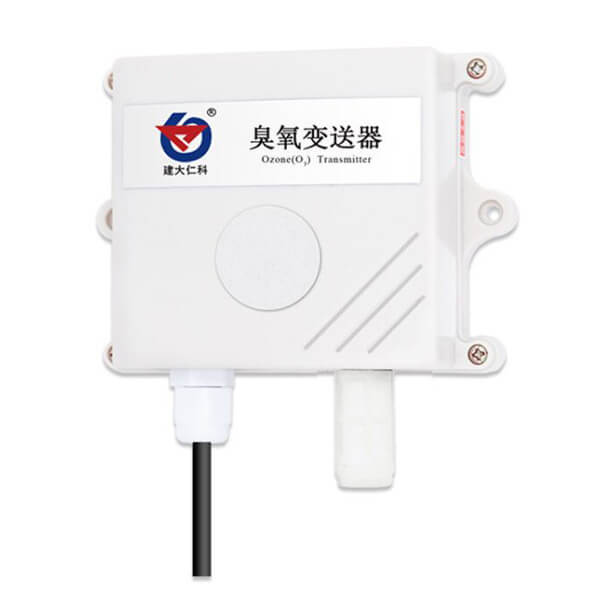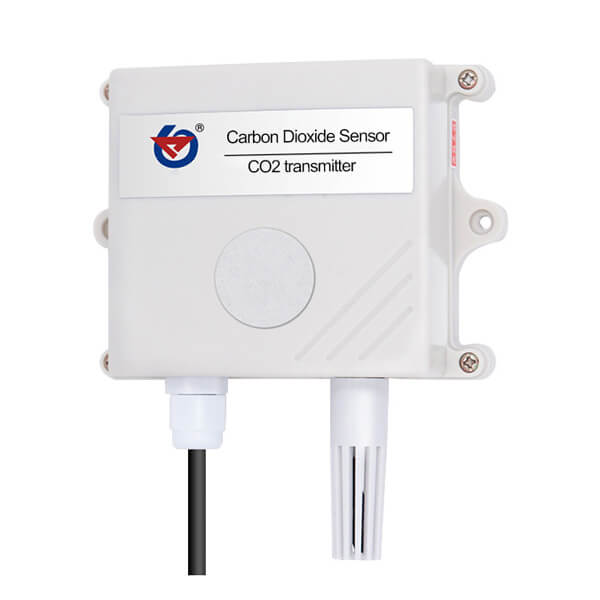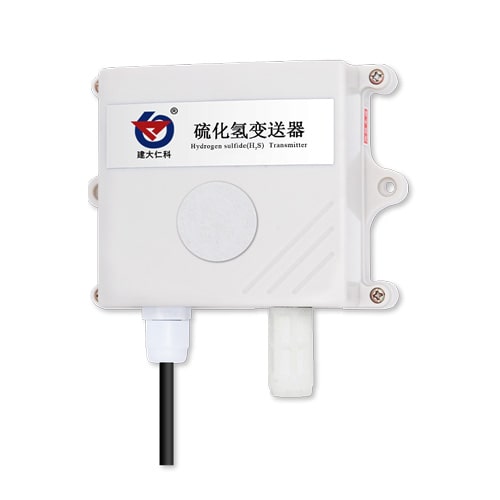Table of Contents Have you noticed this interesting phenomenon? When using gas detectors, different gases have different concentration units. For
Oxygen Sensor
Our oxygen sensors have built-in high-precision measurement units, which have the characteristics of rapid response and strong anti-interference ability. After our company’s unique compensation algorithm and multi-level standard gas calibration, they have the characteristics of long life, high precision, high repeatability and high stability.
- Model: RS-O2-*-2-*-EX
- MOQ: 1 PCS
- Delivery date: within 24 hours
- Price: USD 54.5
About Oxygen Sensor
An oxygen sensor is a device used to monitor oxygen concentration and is widely applied in storage warehouses, chemical plants, livestock farms, and confined spaces. Our RS485-type oxygen sensor features a measurement range of 0–30% VOL, while the analog version measures 0–25% VOL, with a typical accuracy of ±2%FS and a service life of up to 24 months.

Oxygen sensor features
The sensor is equipped with a gas-permeable membrane made from high-polymer waterproof material, enhancing the product’s airtightness and water resistance. This design allows gas molecules to diffuse through while effectively blocking smoke, dust, and water vapor, thereby protecting the sensor from damage.
Utilizing electrochemical sensing technology, our oxygen sensor offers high sensitivity and excellent stability. Under normal conditions, the oxygen concentration in the air is approximately 21%. Both oxygen deficiency and enrichment can impact human health, making real-time monitoring of oxygen levels critically important.
We are a professional sensor brand manufacturer with 15 years of experience in research, development, and sales. We offer customization services for product appearance and logo. In terms of sensor software, we support secondary development by customers and provide free sample programs to facilitate integration.
The oxygen detector is suitable for various environments where oxygen concentration monitoring is required, such as storage warehouses, chemical plants, livestock farms, and greenhouses. It provides accurate oxygen concentration data in real time, enabling users to take necessary measures to ensure a safe working environment.
Oxygen sensor datasheets
| Parameters | RS485 | 0-5V/0-10V/4-20mA |
|---|---|---|
| Power supply | 10~30V DC | 10~30V DC |
| Power consumption | 0.12W | 0.25W |
| Measure range | 0~30%VOL | 0~25%VOL |
| Accuracy | ±2%FS | ±2%FS |
| Resolution | 0.1%VOL | 0.1%VOL |
| Working environment | -20~50℃, 5~95%RH non-condensing | |
| Pressure range | 90~110kPa | 90~110kPa |
| Stability | ≤5% signal value/year | ≤5% signal value/year |
| Response time | ≤10s | ≤10s |
| Warm-up time | ≥5min | ≥5min |
| Zero drift (-20~40℃) | ±0.3%VOL | ±0.3%VOL |
| Repeatability | ≤1% | ≤1% |
Oxygen Sensor FAQs
1. What is an oxygen sensor?
An oxygen gas sensor is an instrument used to detect and measure the concentration of oxygen in the environment. It converts the oxygen content into an electrical signal that can be read and analyzed by monitoring devices or control systems. This type of sensor is widely used in fields such as industrial safety, environmental monitoring, medical equipment, smart agriculture, boiler combustion control, and automotive exhaust treatment.
2. What is the working principle of an oxygen sensor?
Oxygen gas sensors operate based on several principles, including electrochemical, fluorescence quenching, and zirconia methods.
- Electrochemical sensors generate an electrical current through the reaction between oxygen and an electrolyte. The magnitude of the current is proportional to the oxygen concentration.
- Fluorescence quenching sensors determine oxygen levels by measuring the effect of oxygen on the fluorescence lifetime of a luminescent material.
- Zirconia sensors detect oxygen concentration based on the migration of oxygen ions through zirconia ceramic at high temperatures.
3. What is the lifespan of an oxygen sensor?
The lifespan of an oxygen sensor depends on its type and the operating environment:
Electrochemical sensors: Typically last between 12 to 24 months.
Fluorescence optical sensors: Approximately 5 years.
Zirconia sensors: Can last up to 10 years.
Harsh conditions such as high temperatures, low humidity, or exposure to contaminants may significantly shorten the sensor’s service life.
4. How to properly store an oxygen sensor?
Oxygen sensors should be stored in a cool, dry, and dark environment, avoiding high temperatures (not exceeding 60°C) and extremely dry conditions. Electrochemical sensors should remain sealed when not in use, as some models may require a small amount of oxygen to maintain internal calibration. If refrigerated, the sensor should be allowed to return to room temperature before use to ensure accurate readings.
5. How often should an oxygen sensor be calibrated?
It is recommended to calibrate the oxygen sensor every 6 months. However, the exact frequency should be determined based on usage intensity and environmental conditions. In environments with high humidity, large temperature fluctuations, or the presence of contaminants, more frequent calibration is advised.
6. What factors can affect the accuracy of an oxygen sensor?
Key factors that may impact sensor accuracy include:
Significant fluctuations in temperature and humidity
Evaporation or depletion of the electrolyte
Sensor poisoning from contaminants such as hydrogen sulfide or ammonia
External electromagnetic interference
Regular maintenance and calibration can effectively minimize these influences and ensure stable performance.
7. How to determine if an oxygen sensor is faulty?
Common signs of sensor malfunction include:
Zero drift
Prolonged response time
Decreased sensitivity
False alarms or missed detections
If any of these issues occur, calibration or sensor replacement should be carried out promptly.
8. What is the response time of an oxygen sensor?
The response time varies depending on the sensor type:
Electrochemical sensors: Typically 10 to 30 seconds
Fluorescence optical sensors: Around 5 seconds
Zirconia sensors: Approximately 1 to 2 seconds
Environmental conditions may also affect the response time.
9. Does an oxygen sensor need to be replaced periodically?
Yes. Even if no apparent faults are detected, the sensor should be replaced once its service life has been exceeded to ensure measurement accuracy and operational safety.
10. How to choose the right oxygen sensor?
When selecting an oxygen sensor, the following factors should be considered:
Application scenario (e.g., industrial, medical, environmental monitoring)
Required measurement range and accuracy
Environmental conditions (temperature, humidity, pressure)
Sensor response time and lifespan
Based on specific needs, choose the appropriate sensor type and model. As a professional gas sensor manufacturer, we can recommend the best gas sensor tailored to your application.
11. What is the shipping packing list?
Oxygen Sensor * 1
Self-tapping Screws * 2
Expansion Plugs * 2
Product Certificate, Warranty Card, Wiring Instructions, etc.
Popular Gas Detectors
Related Blogs
Table of Contents What is TVOC? Is it a gas? TVOC refers to Total Volatile Organic Compounds, which is one
Table of Contents The Internet of Things (IoT) is one of the hottest technology words in the past few years,
Table of Contents What is air quality sensor? An air quality sensor is a device used to detect the concentration
Table of Contents Ammonia is the most dominant alkaline gas in the atmosphere and plays an important role in aerosol
Table of Contents Biologists think the human nose can distinguish about 10,000 odors. A dog’s nose can distinguish about 2
Air is a precious natural resource. But air pollution is increasing due to industrial production and human activities. At present,
Carbon dioxide is a gaseous compound produced by the reaction of carbon and oxygen. Its chemical formula is CO2. A


